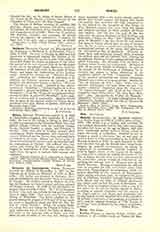

Belzoni, GIAMBATTISTA, an Egyptian explorer, b. at Padua, Italy, in 1778; d. at Gato, Africa, December 3, 1823. His father was a barber, and intended his son to follow that trade, but the boy, who was a born traveler, left home at the age of fifteen, and after some wanderings settled down at Rome, where he began the study of hydraulics. Whether or not he became a monk is uncertain, but, at any rate, he quitted Rome in 1798 and traveled as far as Holland. Having returned to Italy, he again departed in 1803 and travelled through the British Isles, being finally obliged, by reduced circumstances, to secure an engagement in pantomime. Leaving England, he went to Egypt, where, at the request of the pasha, he undertook a scheme for raising the waters of the Nile at Zubra, but the work was later abandoned by the authorities, and he turned his attention to unearthing the colossal bust of Memnon now in the British Museum. Having accomplished this difficult task, he ascended the Nile, and besides many other important Egyptological investigations, made his famous discovery of the mummy of Psammethis. Again setting out from Cairo, he explored the pyramid of Chephren, travelled through Fayum, visited Lake Mceris and the ruins of Arsinoe, penetrated into Libya, and reached the oasis of El-Cassar. In 1819 he went to England, whence, after a stay of a few years, he set out for further travels in Africa, intending to explore Timbuktu and the sources of the Niger, and to visit Benin and Abyssinia; but having landed, he was attacked by a fever, and died. He printed a narrative of his journeys at London, in 1821, and his original drawings of “The Tombs of the Kings” were published by his widow, at London, in 1829.
EDWIN RYAN

